How to eat at home like you're travelling the world

As international borders closed, many of us had our travel plans dashed. We put our passports away in a place we'll never remember and cried into our monogrammed hard-shell suitcases at the thought of all the cute Instagram pics we'll never be able to post.
With overseas travel unlikely for a while now, we've decided to take foreign affairs into our own hands – into our kitchens. Just because you can't eat pizza in Italy like Julia Roberts in Eat Pray Love, doesn't mean you can't sit at your dining table and do a bad impersonation of a woman curing her mid-life crisis with a really good slice of Margherita. Transform your kitchen into these cities, and start ticking off the bucket list.
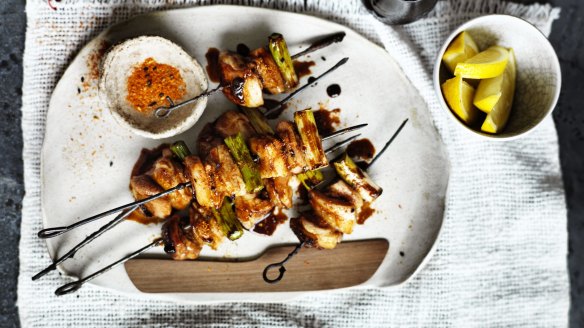
First stop: Tokyo, Japan
This one is easy for those living in cramped apartments, it'll be just like poking your head into one of those five-seater joints in Shinjuku's Golden Gai. Stock your cupboard with shichimi togarashi, a chilli spice mix that's good on everything; sake and mirin for sauces and yakitori glazes; miso paste makes a great marinade; and get to know various seaweeds – kombu for making dashi stock, wakame to add to miso soup, and nori for sprinkling in rice bowls or making sushi rolls. Soba noodles can make a quick dinner topped with sesame oil, edamame, soy sauce and chilli. If you want to make ramen, tonkotsu requires pork bones to be slowly simmered for hours, but these alternative ramen recipes are just as delicious. In lieu of a kimono, a dressing gown is acceptable.

Next stop: Paris, France
Butter, cheese, wine and lots of bread – eating French-style became many of our quarantine diets without us even realising it. But to up the ooh la la, it's all about learning the traditional French cooking techniques. Learn a classic choux pastry to make eclairs or Paris-Brest; master the art of puff to make croissants, an apple tart or tarte tatin; create perfectly puffy brioche; achieve great heights with a cheese souffle; and have the patience to perfect your roux so you can make a rich French onion soup or creamy gratin. French food is also a good chance to use up leftover wine by deglazing pans – use a cup of red in beef bourguignon or coq au vin. I don't know who needs to hear this, but leave the garden snails alone and save escargot for when the borders reopen.
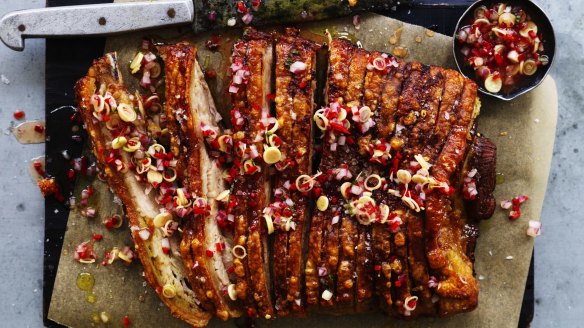
Next stop: Bali, Indonesia
I think we're all in need for a wellness retreat, so pack your bag, braid your hair and find some delicious Zen in Bali, baby. If you think Balinese food begins and ends with fried rice or mi goreng, you need to leave the borders of your pretend villa in search of babi guling (roast suckling pig), betutu (chicken or duck stuffed with spices) and the coconut-laden urap vegetable salad. A chilli sambal is an essential accompaniment to Indonesian food, and sambal matah, a raw relish of lemongrass, garlic, chilli and lime leaves, is Bali's most popular. Set your sights across the islands with other Indonesian favourites: beef rendang, gado gado, satay skewers and fried bananas. Fill your body board bag with some weeds from the back garden for extra points.
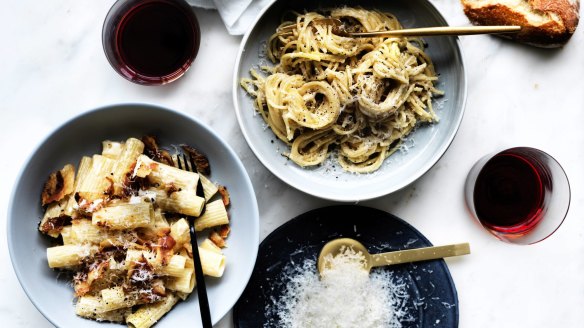
Next stop: Rome, Italy
We know you've got pasta covered, and probably the number of your local takeaway pizza joint memorised, but what about other Italian classics? Arancini balls are a very snackable way to use up any leftover risotto. Italians like to use a lot of veal for its tender meat – add the mince to soft polpetti meatballs; cook the shanks low and slow in an osso buco; wrap the escalopes in prosciutto to make saltimbocca; or crumb them to make veal involtini. Italian food is not just about the heavy-weights, keep things light with the emotionally named "fish in crazy water" (aqua pazza), or as spring returns make a simple caprese salad with mozzarella, tomatoes and basil. Live the life of a pizzaiolo and follow this how-to pizza dough guide and choose some of our favourite toppings (but no pineapple, sorry, it's the rules). Crank the heater, layer up the fake tan, put on a very revealing string bikini and pour yourself some frizzante for full Italian summer vacay vibes.
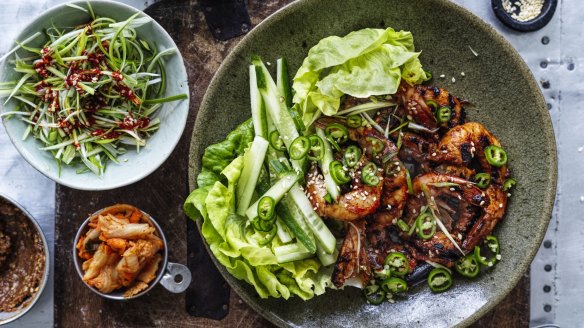
Next stop: Seoul, Korea
A Korean pantry relies on a few staples to make a wide range of traditional dishes. You'll need to get to know jang (sauce), which adds quick umami flavour to meats, soups and more. The most widely recognised in Australian households is gochujang – a red pepper paste found in marinades, bibimbap and stews – but there is also doenjang (soybean paste) used for flavouring soups and meats, and ssamjang, which is a dipping sauce made of the two and a must for ssam wraps. Koreans rely on a lot of fermented foods to get them through their icy winters, many, like kimchi, are fired up with gochugaru (Korean chilli powder); serve it as banchan (side dishes), simmer it in stews or toss through stir-fries or fried rice. Chowing down on an oversized plate of Korean fried chicken is an essential part of travelling in Seoul, so make your own by twice-frying them in a starchy rice-flour batter and dousing in a sticky gochujang sauce. Throw it all down with a cold Korean beer (preferably spiked with a shot of soju) and you'll feel like you're dining out on the streets of Gangnam.
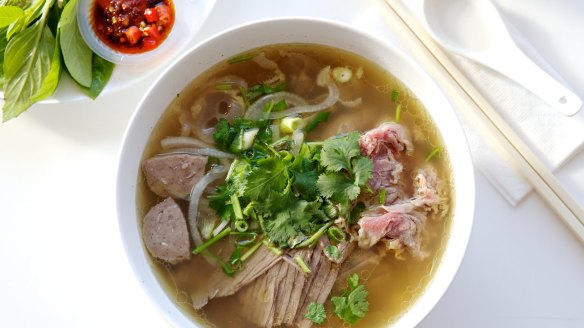
Next stop: Hanoi, Vietnam
"Good morning, Vietnam!", you can shout from your breakfast table, as you sip eye-wateringly sweet Vietnamese coffee and stuff your face with bun cha, Hanoi's traditional meatball and rice noodle breakfast and the dish that Obama fell in love with on his infamous visit with Anthony Bourdain. A proper nuoc cham dipping sauce is essential for this dish (and many others), which means you need a good-quality fish sauce and palm sugar in your pantry. A thriving herb garden is also ideal; plant Vietnamese mint, coriander, perilla leaves, plus dill for Hanoi's traditional cha ca la vong (turmeric fish). Dried spices give pho its deep, warming flavour; simmer beef bones with star anise, cinnamon and cardamom. For lunch choose banh mi, and don't skip the pâte, or go for perfectly charred barbecued chicken. Eat on tiny stools for the full effect.
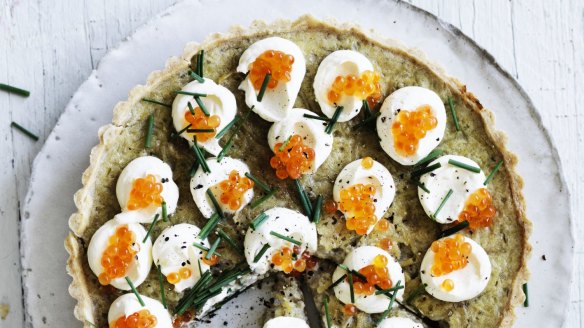
Next stop: Stockholm, Sweden
Step away from the Ikea food court. OK, a Swedish adventure at home will not be the price of $1, but it will be much, much better. The Swedish furniture conglomerate made the country's traditional meatballs world-famous, make yours at home spiced with nutmeg and a side of mashed potato and pickled cucumbers. The Swedes are also known for their baked goods – spiced buns, cream-filled semla buns, dark rye breads and delicate tarts. Planned to experience a Swedish midsummer festival this year? You can still do it: think seafood, potatoes and picnic fare set around an inflatable kiddy pool. Cook a classic fresh crayfish party, try oven-baked trout with a potato rosti, or a baked salmon and potato pudding. DIY flower crown.
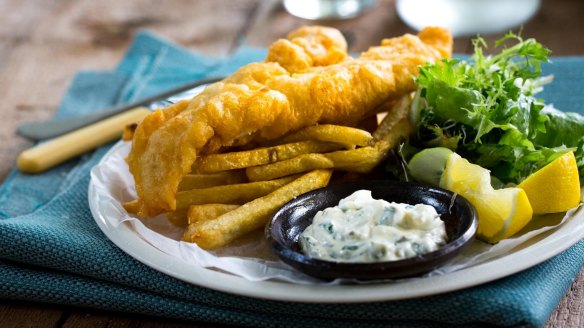
Next stop: London, England
Gather your best porcelain and put your pinkies out. It's Devonshire tea time, queens. Learn how to make the perfect scone to go with your Earl Grey, or add some biscuits if you can't be bothered baking, though we prefer Tim Tams to Penguins. Pretend your home is a traditional English pub, with a bottle of HP sauce to douse beef wellington, toad in the hole, flaky pies and a typical Sunday roast with Yorkshire puds. Add a pint of ale, and spill a little on your carpet so it gets that real authentic sticky carpet pub vibe. Or transform your kitchen into a humble British chippy, with fish and chips and mushy peas. Feeling (ever-so-slightly) spicy? Get your British Indian on with butter chicken, tikka masala or kedgeree. Lovely jubbly.
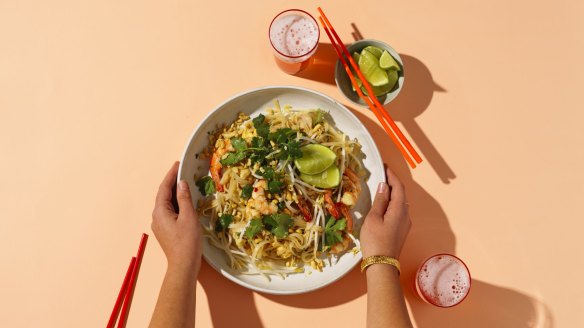
Final stop: Bangkok, Thailand
Street food, but make it on your driveway. Wave to your neighbours as you toss tamarind-soaked pad Thai in a sizzling wok on a camp burner, and mist yourself with a spray bottle to emulate the 100 per cent humidity of southeast Asia. Get your toot-paper stash ready for the ring of fire as you embark on a bird's-eye/scud chilli journey with spicy larb, northern-style coconut-curried khao soi noodle soup, and a seafood treasure chest of fiery tom yum goong. You'll want palm sugar, tamarind pulp, fish sauce, shrimp paste, dried shrimp and a whole range of chillies for Thai classics, and invest in a big mortar and pestle to pound the green papaya for som tum. Thai khanom (desserts) range from layered coconut cakes to onion covered custards to meringue-filled pancakes, but it wouldn't be a trip to the big mango without its most famous sweet – mango and sticky rice. Selfies or it didn't happen.
Appears in these collections
From our partners
Original URL: https://www.watoday.com.au/goodfood/how-to-eat-at-home-like-youre-travelling-the-world-20200812-h1pyrp.html